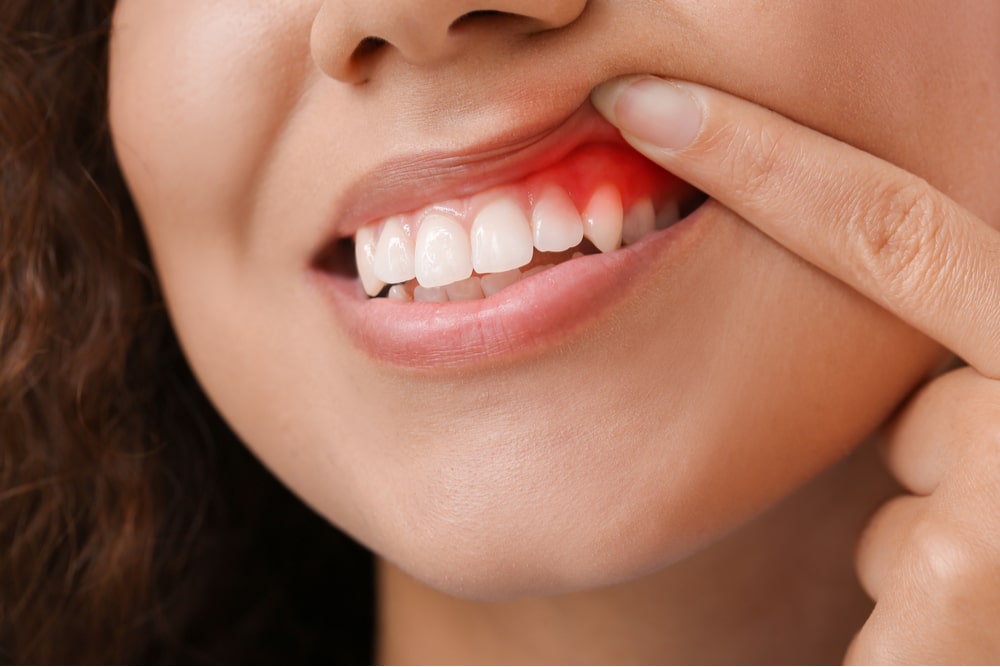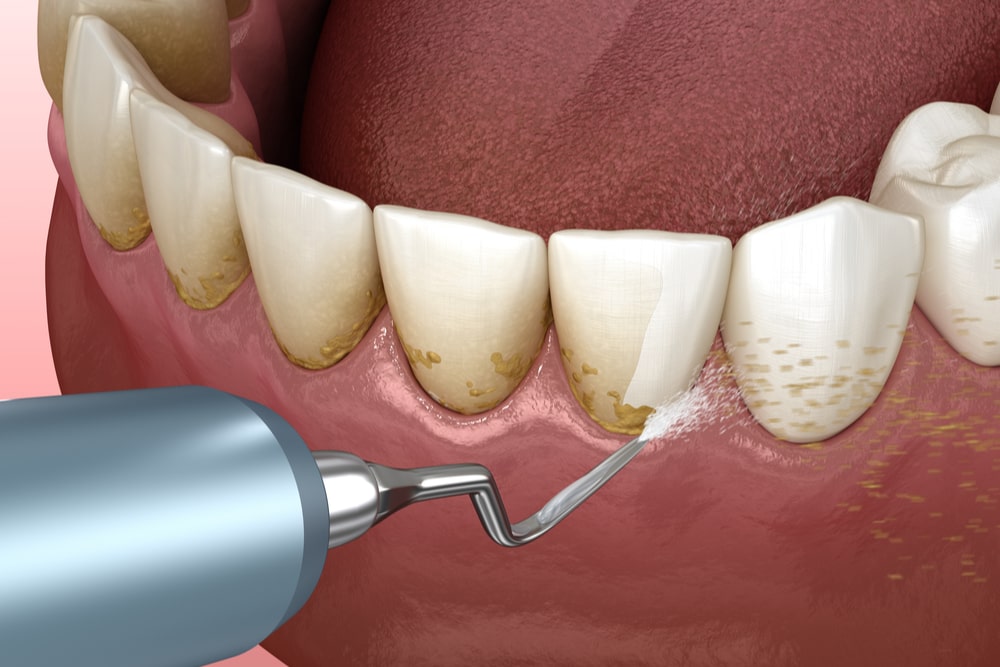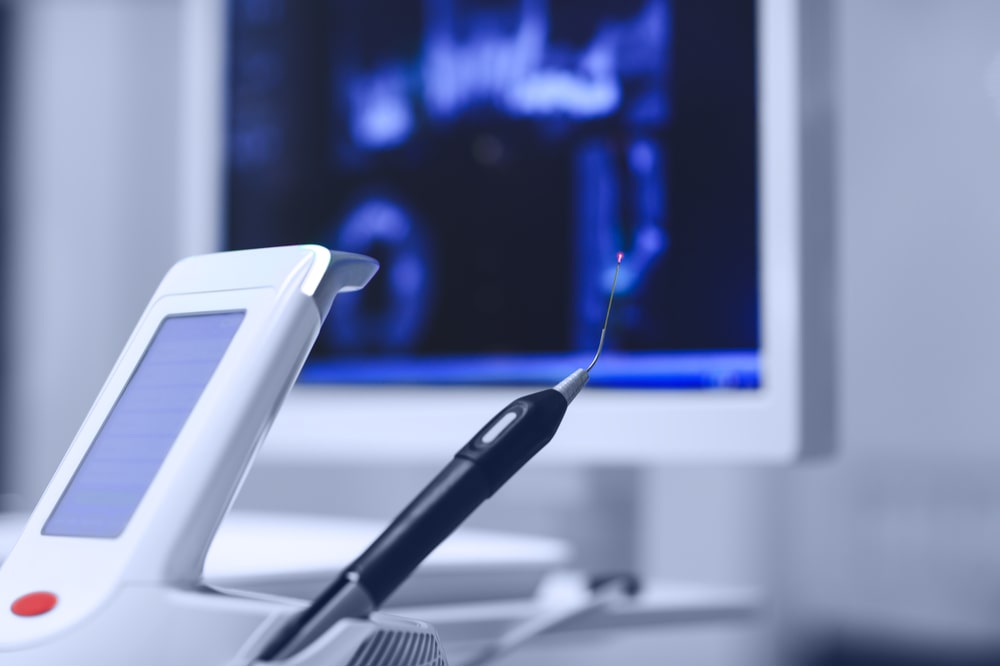What is Gum Disease?
Gum Disease is an infection of the gums – the tissue surrounding and supporting your teeth.
It will usually start with a buildup of plaque. This sticky film forms when the bacteria naturally found in our mouths interacts with the starches and sugars in our food. When not removed by regular twice-daily brushing and once-daily flossing, plaque can harden into tartar. Tartar is going to be much more difficult to remove than plaque. When built up below the gum line, it can cause irritation and inflammation of the gums around the base of the teeth. This first, mildest form of gum disease is known as Gingivitis. Continued and chronic inflammation of the gums can eventually lead to advanced gum disease or Periodontitis. At this stage, it can lead to the loss of tissue and bone supporting your teeth, causing the teeth to feel loose and move around in your mouth.
Periodontitis can cause additional health complications, including tooth loss. The bacteria causing Periodontitis can also enter the bloodstream through your inflamed gums and possibly affect other parts of the body.
Gum disease – both early-stage Gingivitis and advanced stage Periodontitis – is, unfortunately, one of the major causes of tooth loss in adults. And it is more common than you might think. According to data from the Centers for Disease Control and Prevention, almost 50% of adults in the United States over 30 suffer from chronic Periodontitis and over 70% of those 65 and older.
What are some warning signs that might suggest a bigger problem?
- Red or purplish gums
- Swollen or tender gums
- Receding gums – when the gums pull away, exposing more of your tooth, including part of the root
- Gums that bleed easily
- A lingering bad taste in your mouth or persistent bad breath
- Permanent teeth that are loose, separating, or otherwise moving
- Changes to how your teeth fit together when biting or closing your mouth
- Changes in the fit of partial dentures, if you have them
Your gums should be pale pink in color, firm, and fit snugly around your teeth.
If you are suffering from any of these symptoms or otherwise suspect you may have signs of gum disease, please contact us to make an appointment to check your teeth and mouth. The sooner these symptoms are treated, the better. Gum disease is usually reversible when caught in its early stages. Gingivitis can typically be eliminated with a combination of professional teeth cleaning in the office to remove the buildup of tartar followed by regular brushing and flossing by you at home. How often you need in-office teeth cleanings will depend on any risk factors you may have that increase your chance of developing Periodontitis, such as dry mouth, smoking, or certain medications or diseases. However, usually, you should come in for dental visits every six to twelve months.
Treatment Methods/What to Expect
Early treatment is vital for stopping gum disease in its tracks before more severe damage to the tissue and bone supporting your teeth and to your teeth themselves can occur. For the best chance at a successful outcome, it is crucial to adopt or maintain a daily routine at home of brushing and flossing, in addition to an in-office treatment that your periodontist, dentist, or dental hygienist may perform.
If your Periodontitis is in the earlier stages, treatment non-surgical, less invasive treatments may be all that is needed. These may include:
Scaling: Removing the tartar and bacteria from the surface of your teeth and below your gums.
Root Planing: Smoothing the surface of your roots to remove buildup that may be causing inflammation or delaying the healing and reattachment of your gums to your teeth.
Antibiotics: Either topical antibiotics, in the form of mouth rinses or gels applied between your teeth and gums after deep cleaning, or oral antibiotics prescribed to you.
Advanced and chronic periodontitis may require more invasive dental surgery procedures by a periodontist, such as:
Flap or Pocket Reduction Surgery: Small incisions are made in your gum to allow for more effective scaling and root planing, and if necessary, recontouring of the underlying bone. This will allow your gums to heal and make it easier to clean your teeth to maintain healthy gums going forward.
Soft Tissue or Bone Grafts: A soft tissue graft will help to reinforce the damaged soft tissue of your gums, covering exposed roots and preventing further receding of the gums. This is usually done using either a small amount of tissue from the roof of your mouth or from a donor source. A bone graft will help prevent tooth loss when Periodontitis has progressed so far that the bone surrounding your tooth root has been destroyed. This is usually done using small fragments of your own bone or synthetic or donated bone fragments.
Guided Tissue Regeneration: When the bone surrounding and supporting your tooth root has been destroyed, a special type of fabric placed between the remaining bone and your tooth will help prevent any healing complications. This will prevent the soft tissue of the gums from entering the area and preventing the bone from growing back where it is needed.
Gum Disease Prevention
Good oral hygiene really is the key to good oral health and the basis for gum disease prevention.
Brush your teeth twice and floss once daily. Brushing after meals and snacks is also good. These are essential for removing plaque and minimizing the buildup of tartar.
Schedule in to get regular in-office teeth cleaning to remove tartar and keep your teeth and gums healthy. Regular dental cleanings will help break the plaque → tartar → gum disease progression.
Contact us today to schedule an appointment to help you keep your teeth and gums healthy for years to come. At New York Dental Solutions, our practice includes a team of dentists, including a periodontist and orthodontist, and a dental hygienist. As a result, we can offer a full range of coordinated dental care, both preventative and curative, in a compassionate and caring setting.






